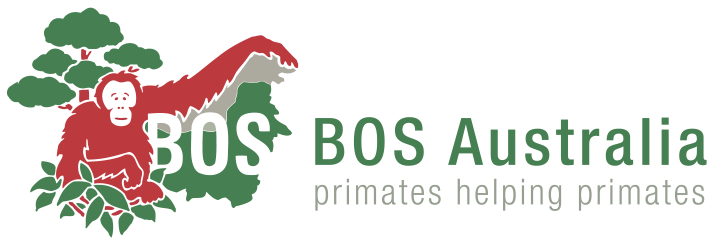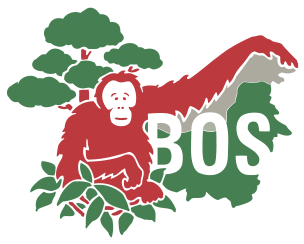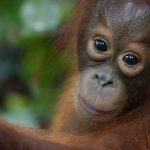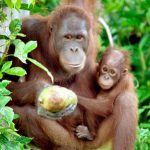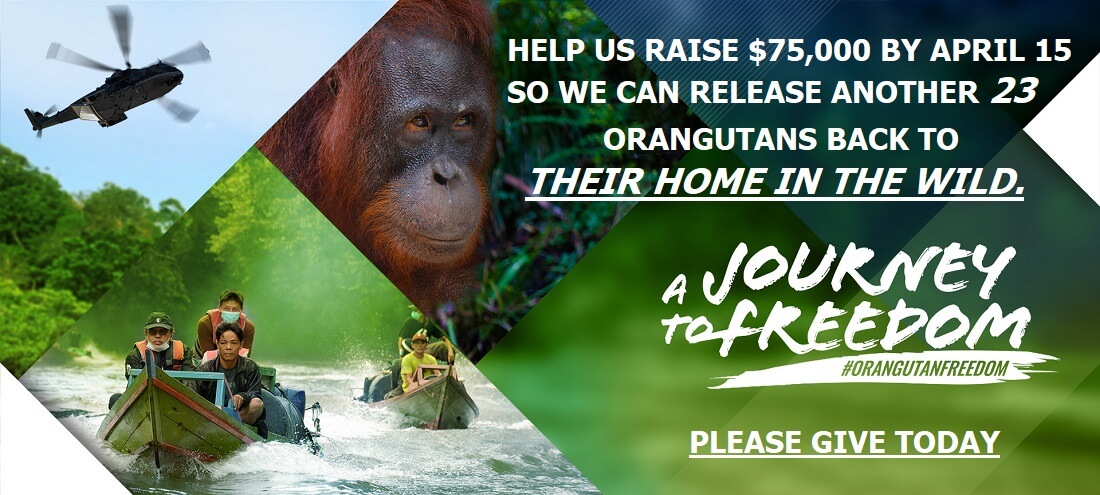Genome sequenced: orangutan DNA more diverse than human’s
Physorg.com : January 26, 2011
Among great apes, orangutans are humans’ most distant cousins. These tree dwellers sport a coat of fine reddish hair and have long been endangered in their native habitats in the rainforests of Sumatra and Borneo in Southeast Asia.
Now, an international team of scientists, led by Washington University School of Medicine in St. Louis, has decoded, or sequenced, the DNA of a Sumatran orangutan. With this genome as a reference, the scientists then sequenced the genomes of five additional Sumatran and five Bornean orangutans.
Their research, published Jan. 27 in Nature, reveals intriguing clues about the evolution of great apes, including humans, and showcases the immense genetic diversity across and within Sumatran and Bornean orangutans. Diversity is important because it enhances the ability of populations to stay healthy and adapt to changes in the environment.
“The average orangutan is more diverse – genetically speaking – than the average human,” says lead author Devin Locke, PhD, an evolutionary geneticist at Washington University’s Genome Center. “We found deep diversity in both Bornean and Sumatran orangutans, but it’s unclear whether this level of diversity can be maintained in light of continued widespread deforestation.”
The scientists catalogued some 13 million DNA variations in the orangutans. This valuable resource can help conservationists assess the genetic diversity of orangutan populations both in the wild and in captivity and help set priorities for aiding subpopulations based on their genetic health.
The orangutan genome adds detail to the evolutionary tree and gives scientists insights into the unique aspects of human DNA that set man apart from the great apes, their closest relatives. Overall, the researchers found that the human and orangutan genomes are 97 percent identical.
However, in a surprising discovery, the researchers found that at least in some ways, the orangutan genome evolved more slowly than the genomes of humans and chimpanzees, which are about 99 percent similar.
“In terms of evolution, the orangutan genome is quite special among great apes in that it has been extraordinarily stable over the past 15 million years,” says senior author Richard K. Wilson, PhD, director of Washington University’s Genome Center, which led the project. “This compares with chimpanzees and humans, both of which have experienced large-scale structural rearrangements of their genome that may have accelerated their evolution.”
A genome reads much like an instruction book for creating and sustaining a particular species. The chromosomes are the chapters and within every chapter are paragraphs, sentences, words and single letters, which are like the individual bases of the DNA sequence.
“If you are editing a book on your computer, you can highlight a paragraph and copy and paste it, delete it or invert it,” Wilson explains. “Duplications, deletions and inversions of DNA are types of structural variations. When we look at the genomes of humans and chimps, we see an acceleration of structural changes over the course of evolutionary history. But for whatever reason, orangutans did not participate in that acceleration, and that was a surprise.”
One possible clue to the lack of structural rearrangement in orangutan DNA is a profound lack of repetitive “Alu” elements. These short stretches of DNA make up about 10 percent of the human genome and can pop up in unexpected places to create new mutations or genetic rearrangements.
The human genome possesses about 5,000 human-specific Alus, while the chimp has about 2,000 chimp-specific Alus.
“In the orangutan genome, we found only 250 new Alu copies over a 15 million-year time span,” Locke says. “This is the closest thing we have to a smoking gun that may explain the structural stability in the orangutan genome.”
The initial Sumatran orangutan genome was sequenced using legacy technology and cost $20 million to complete. Using more sophisticated technology, the cost of sequencing the additional orangutans dropped substantially to about $20,000 each. The project was funded by the National Human Genome Research Institute, the National Science Foundation and other organizations.
The new research shows that the Sumatran and Bornean orangutans diverged some 400,000 years ago. Earlier estimates had put the split at about 1 million years ago. Today, only about 50,000 Bornean and 7,000 Sumatran orangutans still live in the wild.
But in a finding that seems counterintuitive, the researchers found the smaller population of Sumatran orangutans is genetically more diverse than their Bornean cousins.
“It’s quite a mystery how Sumatran orangutans obtained this genetic diversity or whether there has been cleansing of diversity in the Borneans,” Locke explains. “We can begin to search for answers using the catalog of genetic variation we developed.”
Studies of orangutans are important because these great apes, in particular, are under intense ecological pressure. Their numbers continue to erode as humans encroach further on their habitat.
“Orangutans spend more than 95 percent of their time in the trees,” Locke says. “They travel through the trees, nest in trees and forage for food in trees. But all the genetic diversity in the world can’t save them in the wild if their habitat is destroyed.”
More information: Locke DP, Weinstock GM, Rogers J, Mardis ER, Gibbs RA, Wilson RK. Comparative and demographic analysis of orang-utan genomes. Nature. Jan. 27, 2011.
Provided by Washington University School of Medicine
